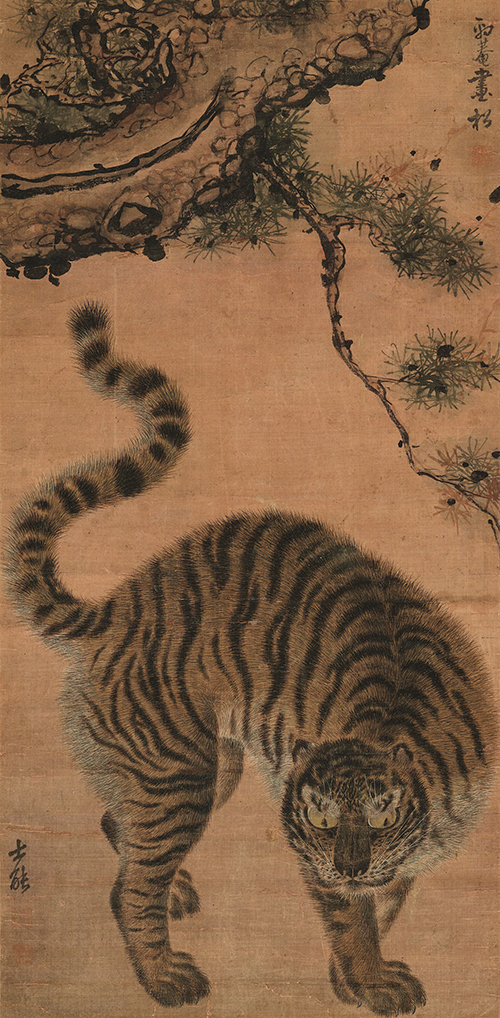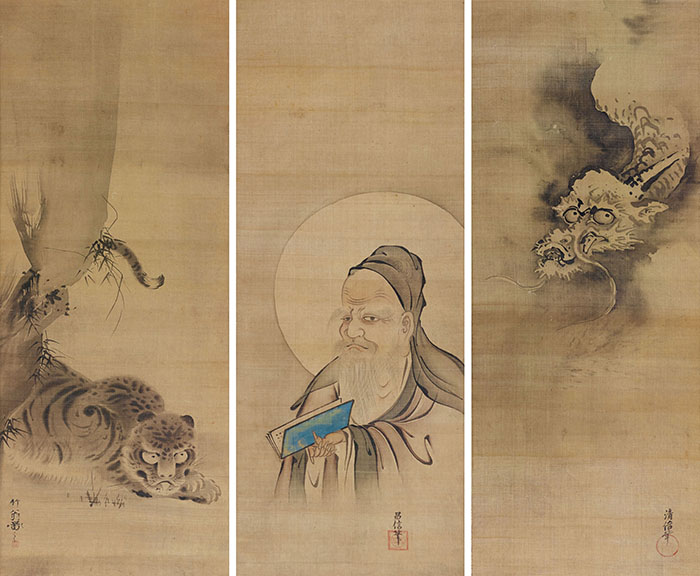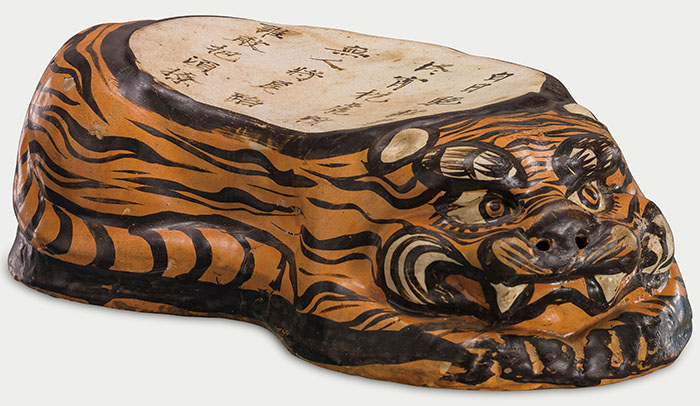
‘A tiger under pine tree’ (소나무 아래 호랑이, 松下猛虎圖), by Joseon artist Kim Hong-do (金弘道) (1745-1806), is on display in special exhibition ’Tigers in East Asian Art: Korea, Japan, China’ currently underway at the National Museum of Korea in Seoul. The exhibition is being held in honor of the PyeongChang 2018 Olympic and Paralympic Winter Games.
By Xu Aiying and Kim Young Shin
Video = Xu Aiying
Photos = National Museum of Korea
Seoul | Feb. 2, 2018
The mascot of the PyeongChang 2018 Olympic Winter Games is Soohorang the white tiger.
The mascot of the Seoul 1988 Summer Olympics, Hodori, was also a tiger.
To many people, the tiger is a holy animal that is a lucky omen, and also a symbol of national identity. Korea’s East Asian neighbors, Japan and China, too, have similar concepts about the tiger, despite there being slight differences in the large cat’s portrayal.
The National Museum of Korea is currently hosting a special exhibition titled “Tigers in East Asian Art: Korea, Japan, China.” It has on display a total of 145 works of art from the three neighboring countries, from ancient times through to the modern era, giving visitors the chance to compare the similarities and differences that exist in descriptions of tigers across Northeast Asia.
The curator of the exhibition said that, “The common factor of the works of art related to tigers from our three countries is that the animal is described as a protector against evil spirits.”
In fact, “Dragon and tiger” (용과 호랑이, 龍虎圖), the largest tiger painting from Joseon (1392-1910), was a sehwa, (세화, 歲畫), a painting put up on the door or the main hall of government offices to bless the new year and to protect people from disasters. The painting depicts the bravery of the tiger with bold use of ink and brush. Such characteristics can also be seen in a Japanese folding screen, “Dragon and Tiger” (용과 호랑이를 그린 병풍, 龍虎圖屛風), and in the calligraphic work “Tiger” (호, 虎) by artist Weng Tonghe (翁同龢) (1830-1904).

A painting of a Taoist saint, a tiger and a dragon, from the Edo period (1603-1868), is one of the items on display in a special exhibition ’Tigers in East Asian Art: Korea, Japan, China,’ currently open at the National Museum of Korea.
The exhibition also shows some of the differences in tiger art among the three countries.
Korean folk paintings show that people here, with their many folk tales featuring the large feline, considered the animal to be a friend.
Mainland Asian works of art, such as weapons and works in bronze, are engraved with tigers and there’s even a tiger-shaped pillow that hint at the long-continued tradition of worshiping and praying to the animal.
However, in the case of Japan, which was not a tiger habitat, the animal was depicted from images found in stories, religious texts or in the artist’s imagination.
“The tiger frequently appears in East Asian art from the ancient times through to the modern era,” said Director General Bae Kidong of the National Museum of Korea. “I hope this exhibition becomes an opportunity for visitors to discover the common factors and differences between the three neighbors.”
The exhibition continues until March 18.

A tiger pillow (虎形磁枕), made in the Jin Dynasty (1115-1234), is on display in the special exhibition ’Tigers in East Asian Art: Korea, Japan, China,’ currently on at the National Museum of Korea.
xuaiy@korea.kr